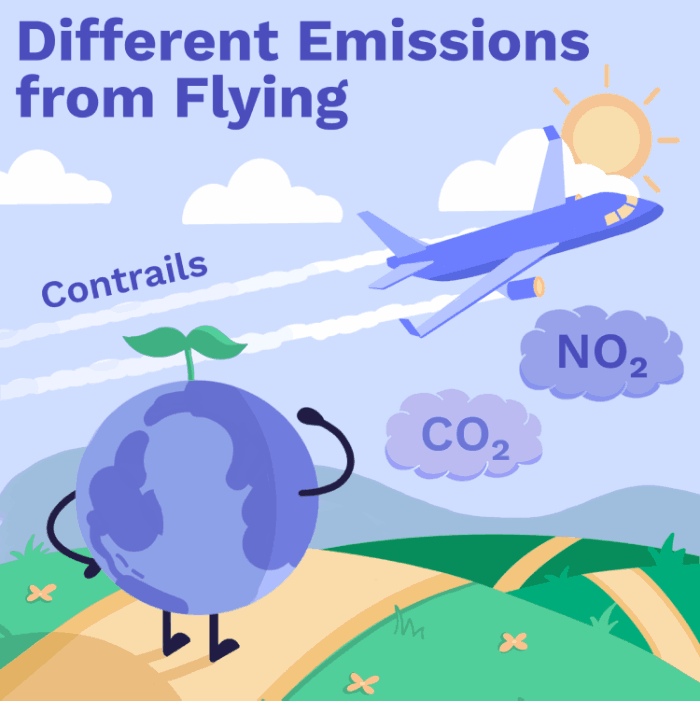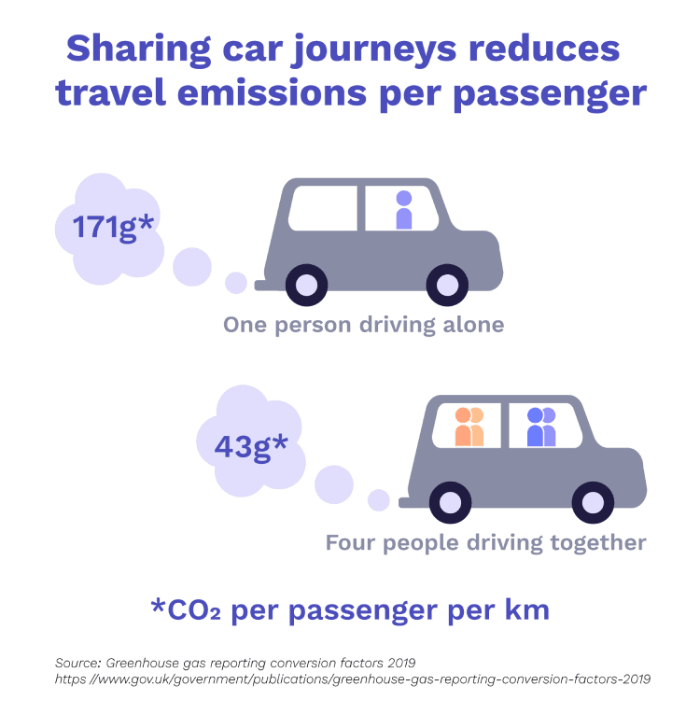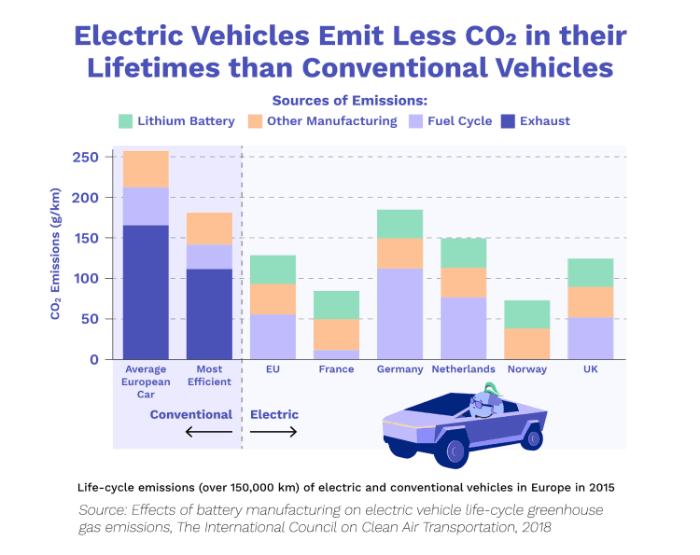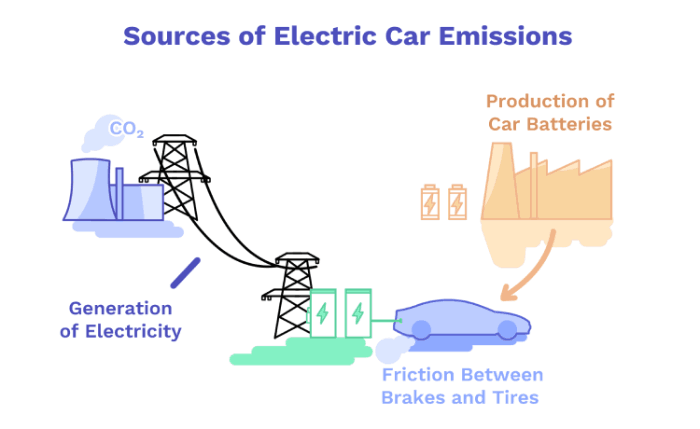Flying and Driving: Can we Travel more Sustainably?
8 minute read
Updated on: 09 Apr 2021
Why focus on transport?
Globally, transport is responsible for 24% of greenhouse gas emissions . It is therefore an important sector to consider in our attempts to shrink our carbon footprint.
Let’s have a look at this in more detail :
Carbon emissions from flying
Over 4 billion passengers are flown each year , often over long distances
. With 133g of CO₂ emitted per passenger per km (for domestic flights)
, this adds up to over a billion tonnes of CO₂ every year
. This is equivalent to 2.4% of global CO₂ emissions
!
Non-carbon emissions from flying
Flying does not only emit CO₂. In fact, over half of its climate impact comes from non-CO₂ emissions .
Contrails are the trails you see behind planes. They are made of condensed water vapour, which is released from aircrafts at high altitude . The water vapour instantly freezes to form ice-crystals, which then produce special clouds called contrail-induced cirrus clouds
. These clouds can trap in the earth’s heat, which causes a warming effect
.
Planes also emit NOx, a gas that contributes to climate change by forming the greenhouse gas ozone . However, there is some disagreement over how big an effect NOx has, because it also destroys the greenhouse gas methane
. Even so, if the buildup of ozone outweighs the removal of methane, there will be a net warming effect
.
How can you reduce your environmental impact from flying?
For some journeys, there are alternatives to flying. For example, taking a ferry emits 18g of CO₂eq per km per foot passenger. Compare this to the 255g of CO₂eq per km released per passenger on a domestic flight !
However, when such alternatives are not available, flying economy is the next best option. Flying in business class produces 2 to 3 times as much CO₂ as flying economy, while flying first class produces 2 to 3 times as much CO₂ as flying business class! This is because premium seats take up more space .
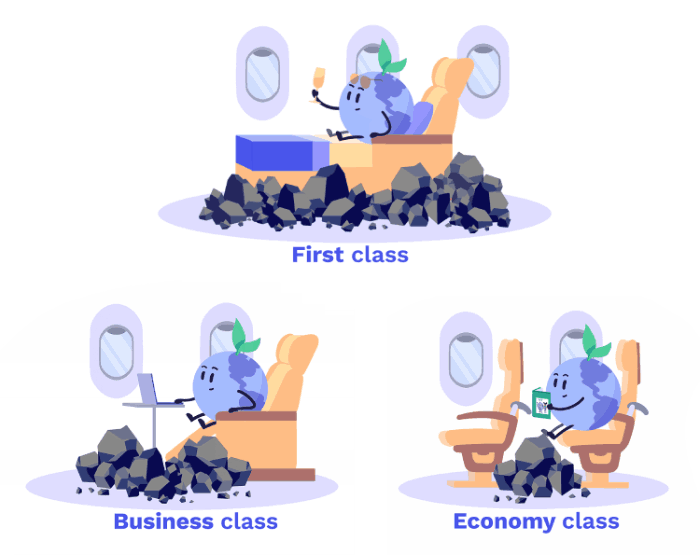
Earthly flying in different classes
Carbon offsetting
Sometimes taking a flight is unavoidable. What can you do to reduce the impact of these flights?
By paying a little extra when you fly, money can be given to support projects that take in an equivalent amount of CO₂ to that released from your journey . This is called carbon offsetting. Projects supported by carbon offsetting include reforestation
or purchase of zero-carbon energy
.
If conducted well, offsetting causes a net reduction in emissions, and may be worth considering should you find yourself faced with an unavoidable flight . Since 2005, projects have helped to reduce, sequester, or avoid over 437.1 MtCO₂e
.

Earthly buying tree planting carbon offsets
That being said, the best way to reduce emissions is to do so directly, rather than relying on carbon offsetting . Moreover, it is crucial to critically examine how much carbon a specific carbon offsetting programme actually removes, as some are more effective than others
. You can do this by checking they have proper certifications and have been verified by reliable third parties, such as environmental Non-Government Organisations
.
Emissions from cars
In the EU, road transport (which includes cars, lorries, and buses) accounts for 72% of all emissions from transport!
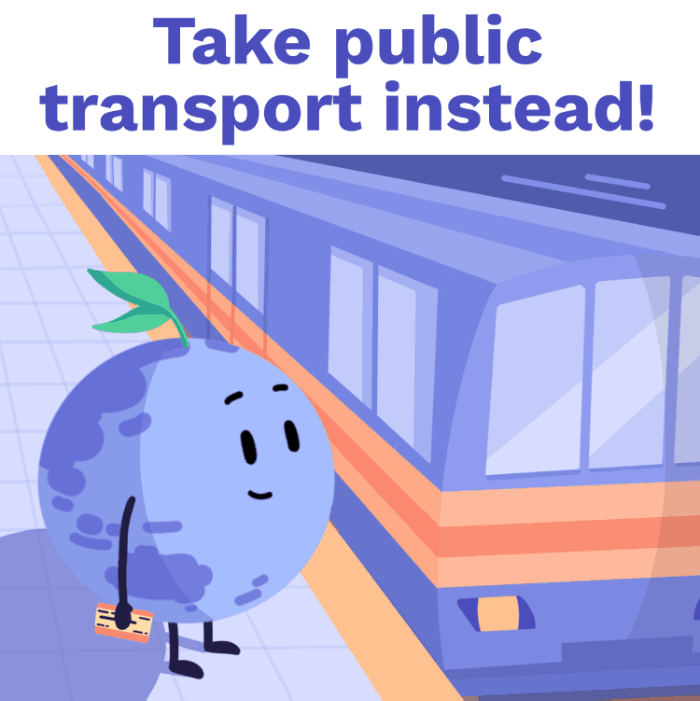
you’ll reduce your impact by taking public transport!
An easy way to reduce your carbon footprint is to share journeys with other people who are going to the same place .
However, if you’ve got the choice, the best alternative is still to take public transport whenever possible .
Should you buy an electric car?
Electric cars store electricity in a battery, which is used to power an electric motor that propels the car forward. This is different to normal cars, which rely on the burning of fossil fuels .
Electricity is still generated by burning fossil fuels in many places , and battery production creates 56-494 kg of CO₂ per kilowatt-hour of battery capacity
.
When compared to conventional petrol vehicles, electric cars still produce fewer emissions in their lifetime .
Even in the US, where 84.3% of energy is produced by fossil fuels , carbon emissions from electric vehicles are around 50% of those produced by petrol vehicles
.
Battery technology continues to improve at an astounding rate, and future innovations will lower the carbon emissions required to produce them . As countries turn to zero-carbon sources of electricity, electric cars will become an even better choice to reduce our carbon footprints (see Energy course for more information).
That said, electric cars still cause the same problems associated with all cars: traffic and road accidents .
Plus, cars release particles called PM₂.₅, which cause air pollution in cities . Most of these don’t come from the exhaust, but from friction rubbing in the breaks and the tyres. This means they will occur for any type of car, electric or not
.
Conclusion
In our increasingly interconnected world, travel has brought about social and economic growth . Unfortunately, it remains a significant source of carbon emissions. The electrification of cars, trucks, and buses
, along with the deployment of sustainable energy, will significantly reduce these emissions
. In the meantime, we can play a role in reducing our emissions if we all limited how much we travel, as well as choosing transportation options with a lower carbon footprint
.


